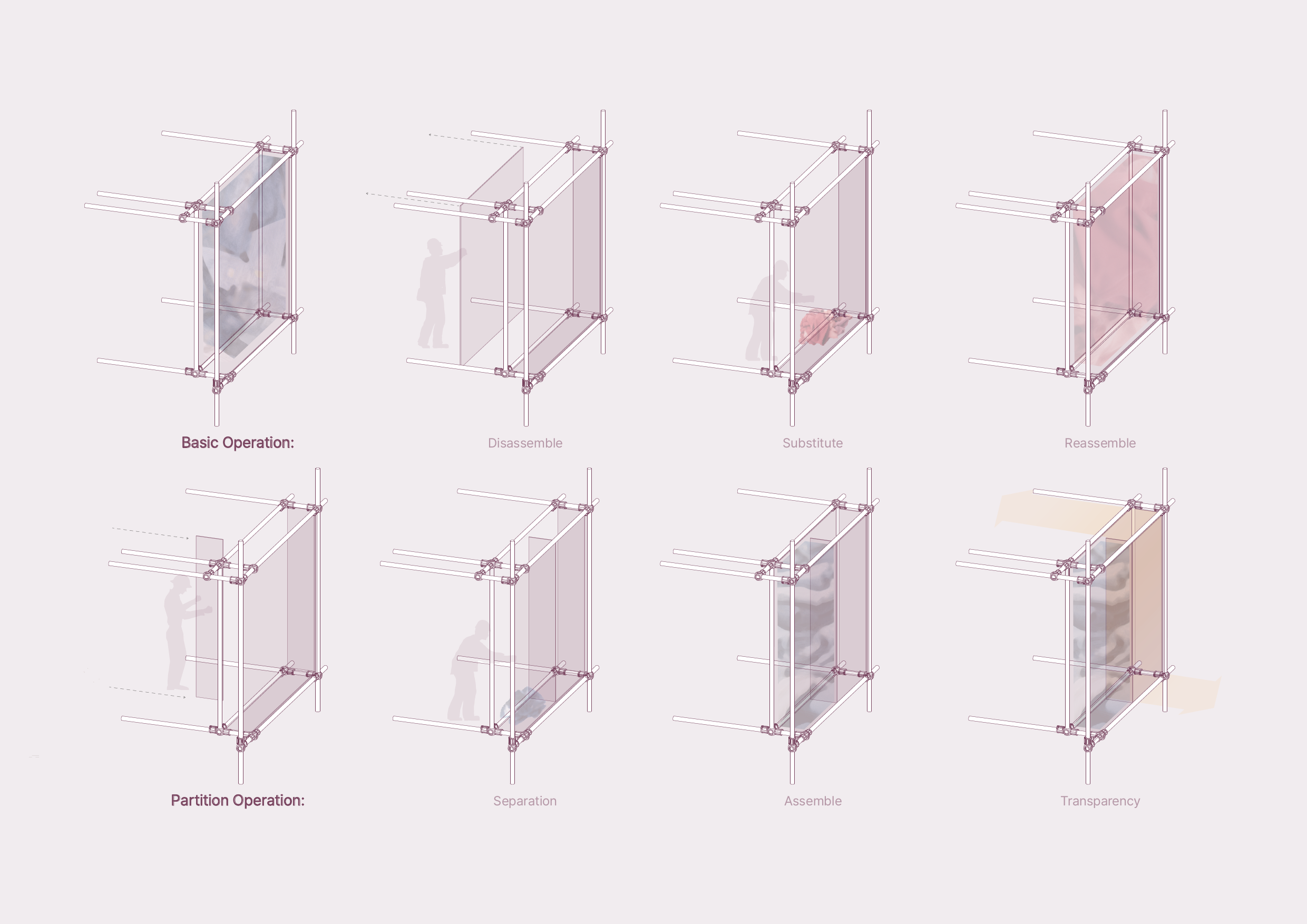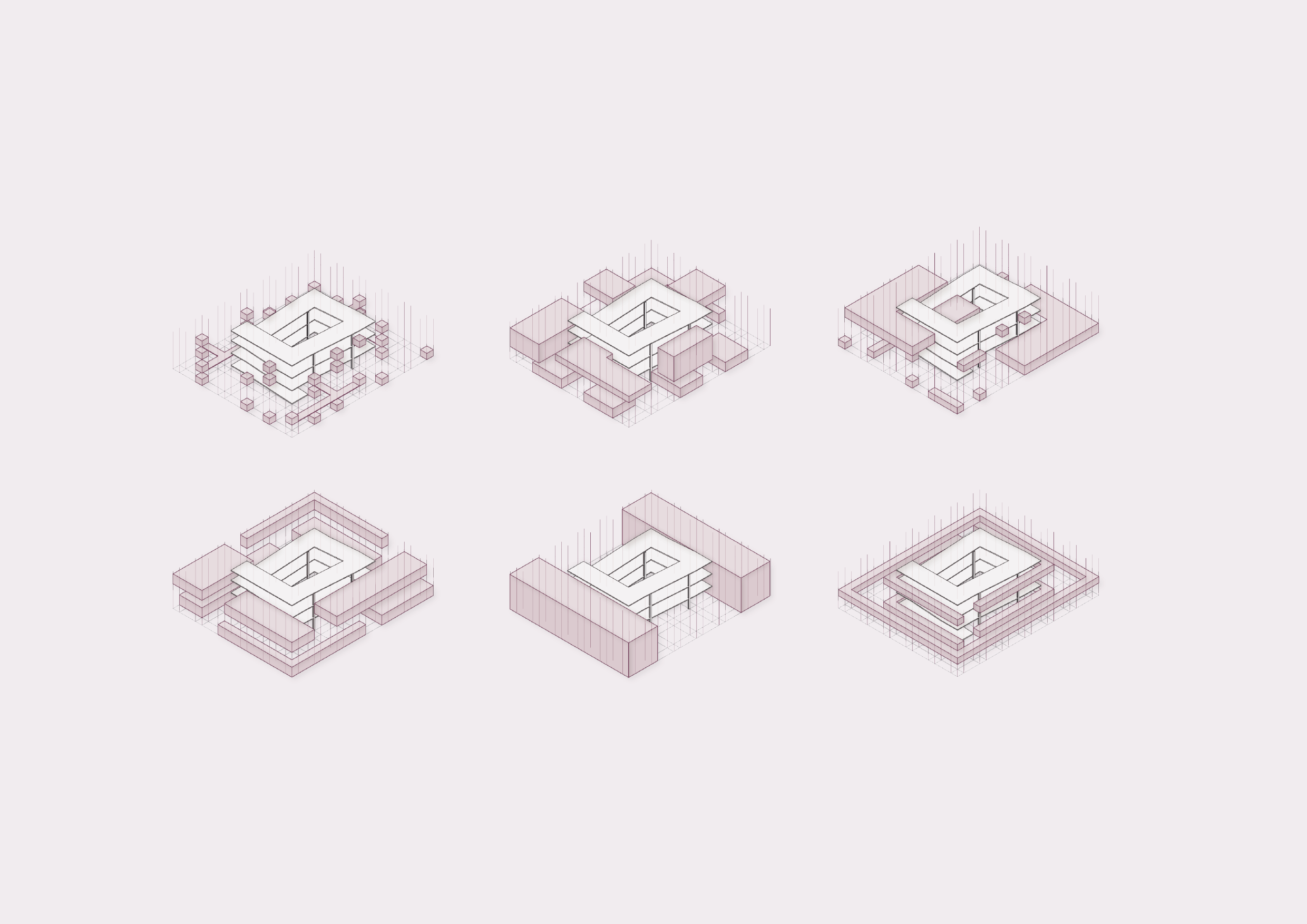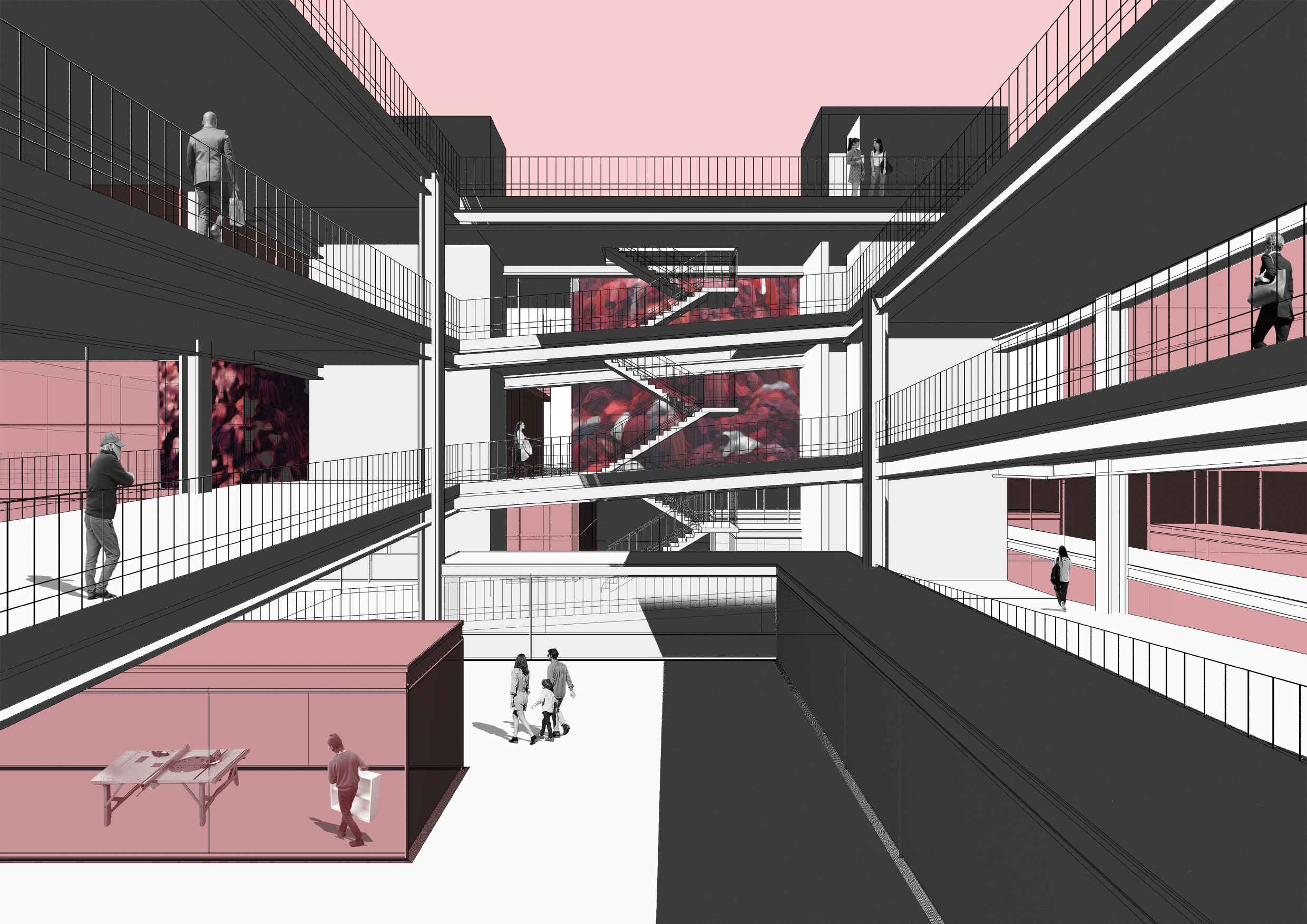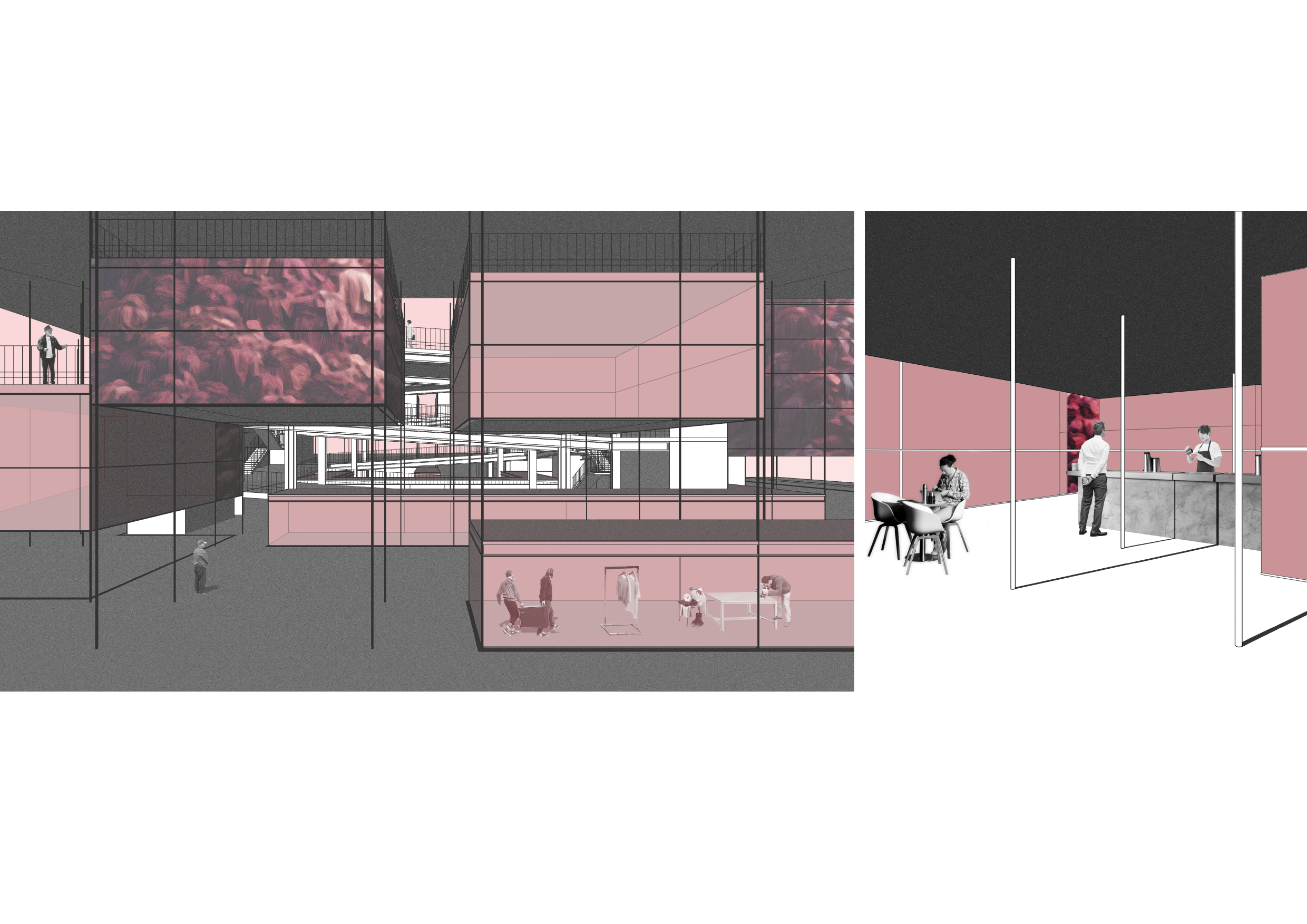이주은_재생의(衣) 공간
우리는 매일 옷을 입으며, 매일 건물에 발을 딛는다.
그러나 버려진 옷이, 철거된 건물이 어디로 가는지에 대해서는 생각하지 않는다.
'지구의 건축'이란, 건물 안에서 일어나는 행위도, 그 형상을 담아내는 건물도 불필요한 쓰레기를 남기지 않는 것이다. 지구에 더 큰 짐을 지게 하지 않는 것이다.
이 프로젝트에서, 버려졌던 옷은 건물의 일부, 또는 새로운 상품으로 다시 태어난다.
대지는 성수 북쪽에 위치한다. 바쁘게 변화하는 패션 트렌드와 팝업의 파도 속에서 성수 건물의 대부분은 일회용품과 같다.
그러나 이 건물을 이루는 재료들-비계 파이프, 유리, 프리캐스트 콘크리트 슬라브-는 그리드에 맞추어 모듈화되어 있으므로, 원래의 용도를 다하고 나서도 버려지는 것이 아니라 또다른 공간으로 재사용 가능하다.
먼저 대지에 다양한 평면을 구성할 수 있는 2.4m와 6m의 그리드를 그린 후, 공간 특성을 크게 2가지-가변적인 주요 공간과 위치가 고정되어야만 하는 코어-로 나누었다. 설계된 조인트를 통해 파이프들은 서로 교차되는 것이 아니라 한 점에서 만나는 방식으로 결합되며, 파이프 위에 유리를 끼워서 벽을 구성하도록 만들어준다. 파이프는 더이상 가설 구조물이 아닌 건물의 구조로 작용할 수 있다. 또한 유리와 유리 사이에는 버려진 옷들을 채워넣어 건물의 입면이자 단열재로 새로운 가치를 부여한다.
이곳에서 누군가는 더 이상 입지 않는 옷을 창고에 보관하고, 누군가는 그 옷을 공방으로 가져와 리폼하며, 또다른 누군가는 업사이클링한 옷을 구매하여 집으로 돌아갈 것이다.
We wear clothes every day and step into buildings daily. However, we rarely think about where discarded clothes and demolished buildings go. I believe that "Architecture on the Earth" aims to ensure that neither the activities within buildings nor the buildings themselves leave behind unnecessary waste, thereby not burdening the planet further. In this project, discarded clothes are reborn as parts of buildings, or new products.
The site is located north of Seongsu. Among the rapidly changing fashion trends and waves of pop-ups, most buildings in Seongsu are like disposable items. However, the materials constituting my building - scaffolding pipes, glasses, and precast concrete slabs - are modularized to fit into a grid. Thus, even after serving their original purpose, they can be reused for other spaces instead of being discarded.
First, a grid of 2.4m and 6m that can compose various planes was drawn on the site, and I classified the spaces into two types - a flexible main space and a core that must be fixed in place. Through the designed joints, the pipes are combined in a way that they meet at a single point instead of crossing each other. Glass is fitted on the pipes to form walls. The pipes thus function as the building's structure, no longer just a temporary scaffolding. Additionally, discarded clothes are filled between the glass panels, giving the building's facade new value as both insulation and an architectural feature.
Here, someone might store clothes they no longer wear, someone else might take those clothes to a workshop to be remade, and yet another person might buy upcycled clothes and take them home.










